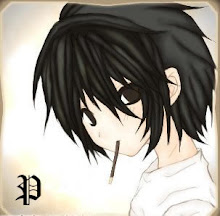Name: Liar Game
Alternate Name: Liar Game
Year of Release: 2005
Status: Ongoing
Author: Kaitani Shinobu
Artist: Kaitani Shinobu
Reading Direction: Right to Left
Genre: Drama, Mystery, Seinen
Liar Game (ライアーゲーム Raiā Gēmu?) is a Japanese manga series originally written and illustrated by Shinobu Kaitani. The manga was first serialized in 2005 in the Japanese manga magazine Weekly Young Jump, published by Shueisha. It was later adapted into a TV series, which started airing on April 14, 2007 on Fuji TV, achieving a 11.4 viewership rating in Japan's Kantō region. It was adapted into a live action film in 2010 - Liar Game: The Final Stage - and it will be adapted into a new live action film in 2012.
Alternate Name: Liar Game
Year of Release: 2005
Status: Ongoing
Author: Kaitani Shinobu
Artist: Kaitani Shinobu
Reading Direction: Right to Left
Genre: Drama, Mystery, Seinen
Liar Game (ライアーゲーム Raiā Gēmu?) is a Japanese manga series originally written and illustrated by Shinobu Kaitani. The manga was first serialized in 2005 in the Japanese manga magazine Weekly Young Jump, published by Shueisha. It was later adapted into a TV series, which started airing on April 14, 2007 on Fuji TV, achieving a 11.4 viewership rating in Japan's Kantō region. It was adapted into a live action film in 2010 - Liar Game: The Final Stage - and it will be adapted into a new live action film in 2012.
The manga has also been translated into Chinese[citation needed] and into Dutch. In Italy the series is licensed by Planeta DeAgostini.[citation needed].
Plot
At the start of the manga, the lead protagonist - a scrupulously honest college student named Nao Kanzaki - receives a package containing 100 million yen (about 1 million dollars) and a note that she is now a contestant in the Liar Game Tournament. In this fictional tournament, contestants are encouraged to cheat and lie to obtain other contestants' money; those who lose have to bear a 100-million-yen debt. When Nao's first opponent - a trusted friend and teacher - steals her money,












- Follow Us on Twitter!
- "Join Us on Facebook!
- RSS
Contact